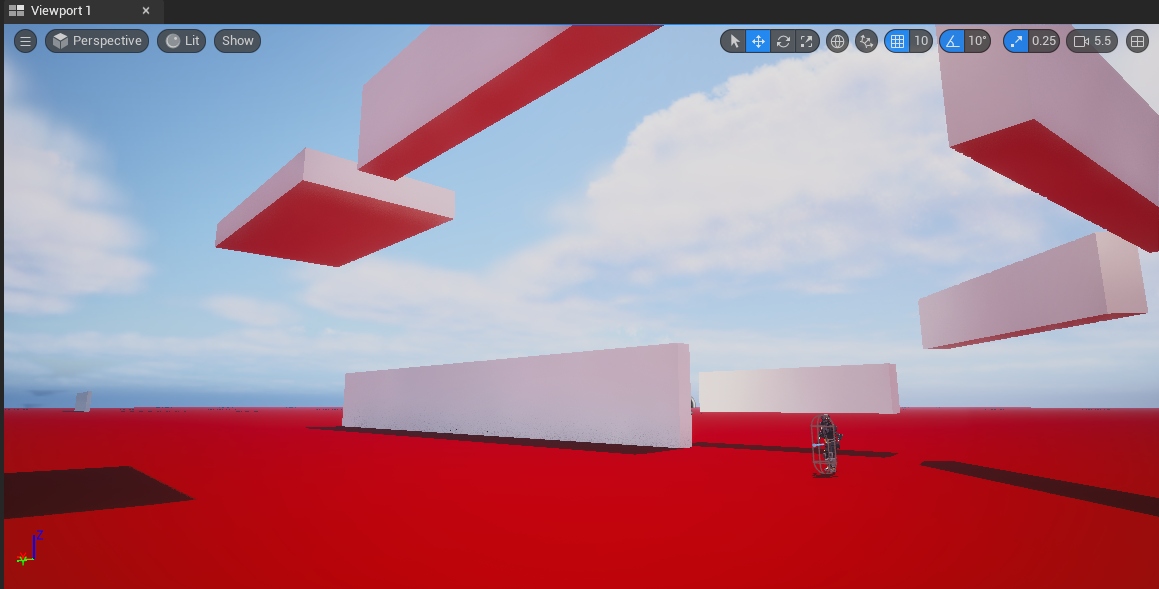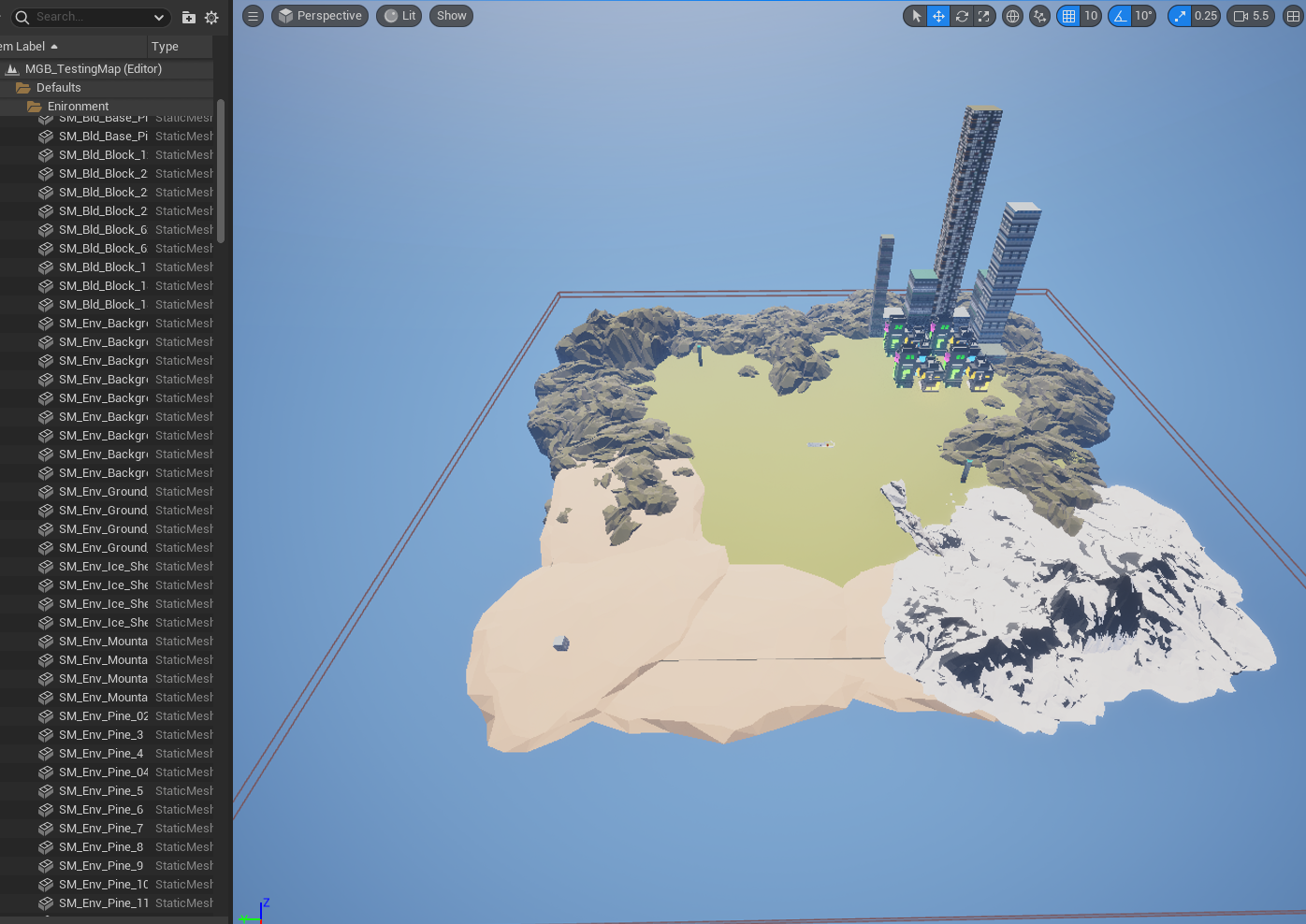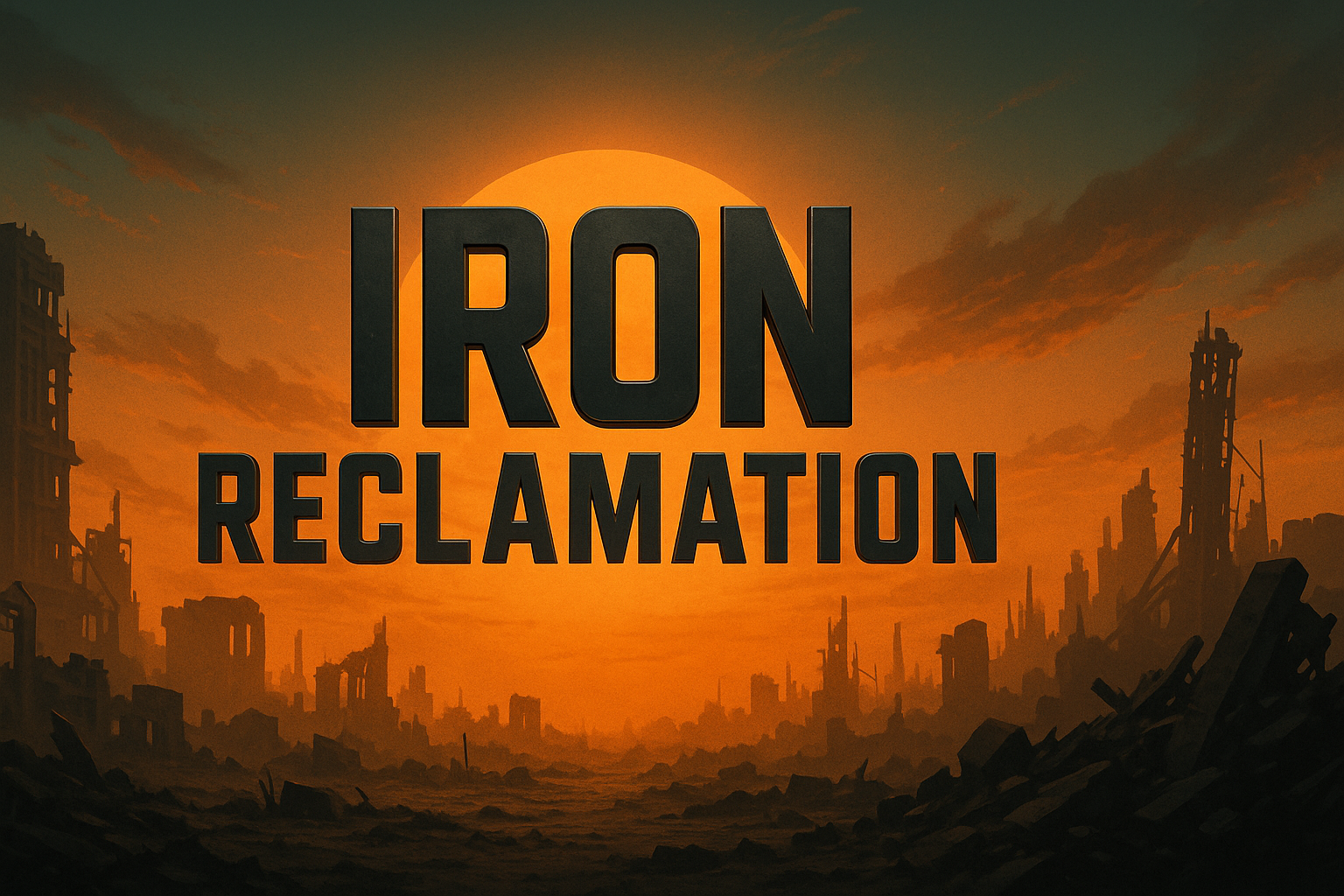From a Grid to a Continent: A Coder's Bumpy Journey into Level Design
Hello, welcome to my first dev log!
We're a small indie team, and like most small teams, we're all programmers. We love logic, systems, and clean code. When you're a team of coders, you tend to think that every problem can be solved with an algorithm. But what happens when the problem isn't about logic, but about feeling? What happens when one of you has to become a designer?
This week, that person was me. I took on the role of building the world in which our game lives.
The Programmer's Paradise (And a Player's Nightmare)
My instincts as a programmer kicked in immediately. What's the most efficient, logical, and testable environment for our game mechanics and AI? A flat grid, of course.
Behold, our first pass at a "testing map":

The perfect testing ground. Pathfinding was a dream.
This grid was perfect. The AI could navigate flawlessly, we could easily spawn enemies, and we could debug gameplay mechanics in a controlled environment. It was clean, simple, and utterly devoid of fun. It had no personality, no sense of place, and it certainly wasn't a world a player would want to explore. It was a sterile lab, not a level.
The Great Overcorrection
We knew we needed something more. A lot more. We needed hills, trees, cities, and a reason for players to explore. So, with the enthusiasm of someone who has just discovered the landscape tool, I dove in.
I didn't just expand the map; I built a continent.

I may have gotten a little carried away.
It has it all: sprawling deserts, snowy mountains, dense forests, and a high-tech city. I was building a world, and the sheer scale of it was exciting. I imagined players boosting across the map, discovering hidden secrets, and marveling at the diversity of the landscape.
The problem is, imagination doesn't have to worry about draw calls or asset loading.
The Hangover of Ambition
Once the initial excitement wore off, the reality of this massive new world set in.
- The Time Sink: The sheer amount of time it took to sculpt mountains and place assets was staggering. Every hour spent on the map was an hour not spent on core gameplay features, which, as a programmer, was driving me nuts.
- Empty World Syndrome: The map is huge, but it was also empty. A big world isn't interesting if there's nothing in it. The task of filling this continent with meaningful content, quests, and points of interest has become very real.
I had swung the pendulum from one extreme to the other. We went from a space that was pure function to a space that needs to be filled.
This whole process has been a humbling lesson.
The coder in me is learning that level design isn't just about building a container for the game to exist in. It's about building a space that enhances the gameplay, tells a story, and creates a mood. It's a different kind of problem-solving, and while it's been a struggle, it's a challenge that I know will make the final game infinitely better.
Thanks for reading, and we'll see you in the next update!
Get Iron Reclamation
Iron Reclamation
| Status | Prototype |
| Author | LGHTS |
| Tags | First-Person, Real time strategy, Singleplayer |
More posts
- Making Combat Feel Good: Fair, Readable, and Responsive AI40 days ago
- Problems With Transferring Materials From One Mesh to Another Mesh40 days ago
- When Customization Gets Complicated: Working with Character Assets in Unreal40 days ago
- Some Tips for UE540 days ago
- Hitting the "Impossible" Deadline: How 5 Programmers Used Process to Beat the Cl...40 days ago
- Bone to Bone: Animation Trouble46 days ago
- When a Simple Menu Isn’t So Simple: Building an Options Menu in Unreal46 days ago
- Better Isn't Always Best: Choosing the Right Tool Under a Sprint Deadline47 days ago
- From Continent to Contained: Learning to Build a World That Works47 days ago
- Perfection Isn't Perfect48 days ago

Leave a comment
Log in with itch.io to leave a comment.